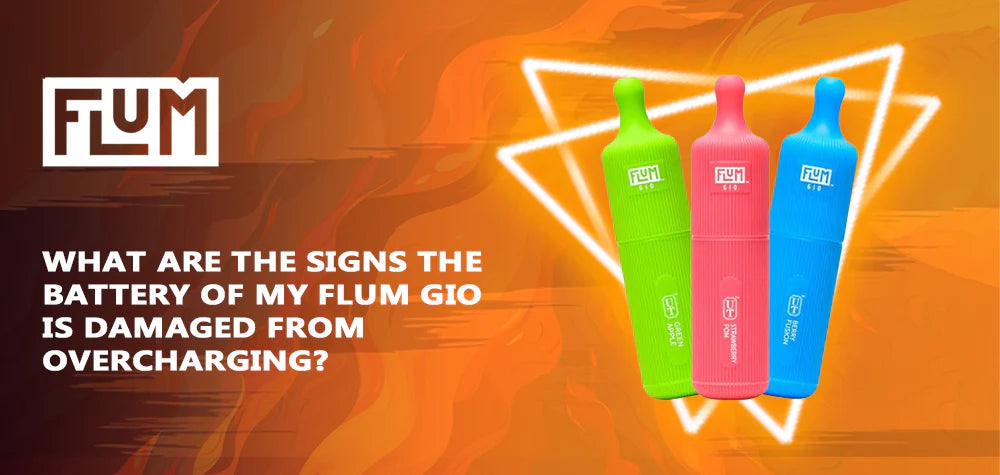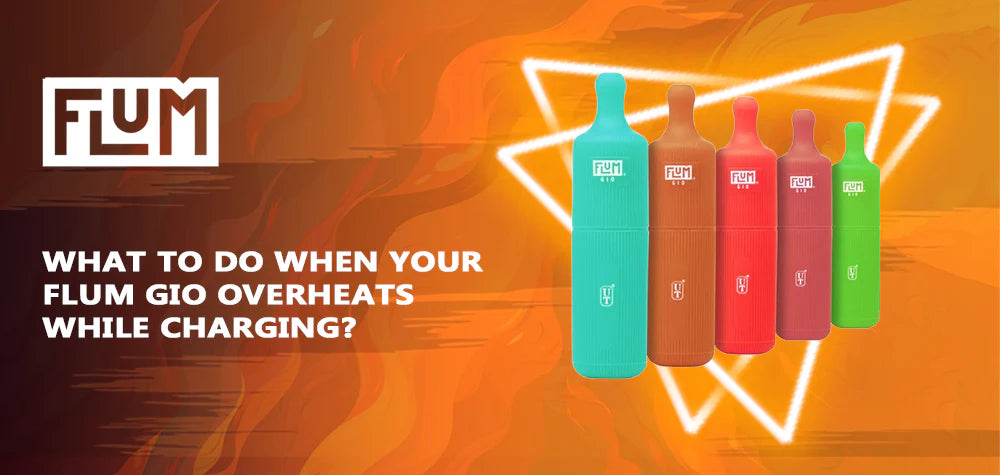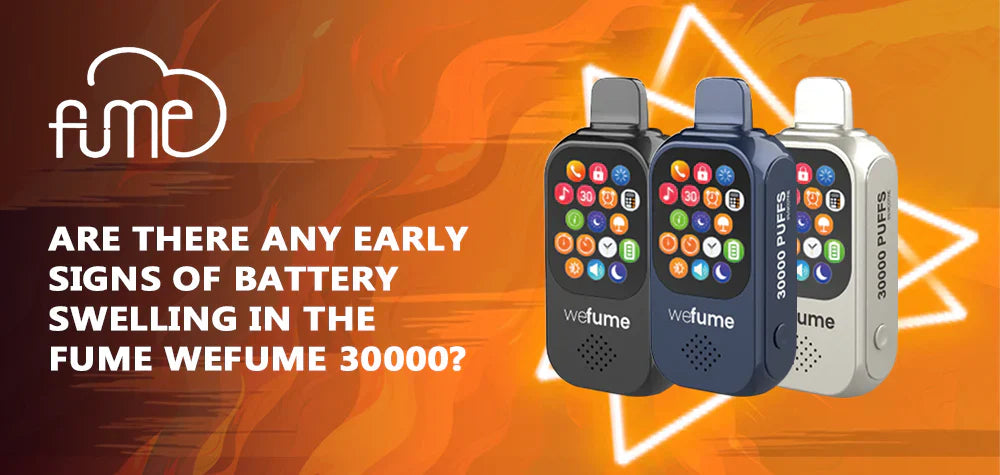
What Are The Signs The Battery Of My Flum Gio Is Damaged From Overcharging?
Overcharging a vape device like the Flum Gio can have serious consequences for the battery's health, performance, and safety. Recognizing the signs that your battery may be damaged from overcharging is crucial to prevent further deterioration or potential hazards. This article provides a detailed exploration of the symptoms of battery damage due to overcharging, the underlying causes, and practical advice on how to manage and mitigate these issues.
Understanding Overcharging and Its Impact on the Flum Gio Battery
Overcharging occurs when the battery continues to receive electrical power beyond its full charge capacity. Although modern devices like the Flum Gio typically include built-in protections to prevent overcharging, these safeguards are not infallible. Prolonged or repeated overcharging can cause the battery cells to experience increased internal pressure and heat generation. This heat buildup can degrade the battery's internal chemistry, reduce its ability to hold a charge, and in severe cases, lead to thermal runaway-a dangerous condition where the battery overheats uncontrollably.
One common manifestation during this process is when the device overheats while charging, signaling that the battery or charging circuitry is under stress. This overheating is a red flag indicating that the battery might be compromised and requires immediate attention to avoid permanent damage or safety risks.
Key Signs That Indicate Battery Damage from Overcharging
The battery of your Flum Gio may show several telltale signs if it has been damaged by overcharging. These signs often develop gradually but can worsen if left unaddressed.
One of the first symptoms is excessive heat generation during charging. While some warmth is expected, if the device becomes unusually hot or even hot to the touch, it suggests that the battery cells are stressed and possibly deteriorating. This heat can also cause the device to feel warm even after unplugging, indicating residual damage.
Another sign is a noticeable decline in battery performance. You may observe that the battery drains much faster than before or that it requires more frequent charging sessions. This reduced capacity is a direct consequence of the battery's diminished ability to hold a charge, often caused by overcharging-induced cell damage.
Erratic charging behavior is also common. For instance, the Flum Gio may fail to charge fully, the LED indicators might blink irregularly, or charging may stop and start unpredictably. This can be linked to the battery's inability to accept or maintain a charge properly, or to damage in the charging port or internal circuitry exacerbated by overcharging.
Physical signs of battery damage include swelling or deformation of the device's battery compartment. A swollen battery is a serious warning that the internal cells have been compromised and could pose a fire or explosion risk. If you notice any bulging or warping of the device's casing, stop using it immediately and seek professional assistance.
The Role of the Charging Port and Cable in Battery Damage
Sometimes what appears to be battery damage is actually related to the charging port or cable. A damaged or dirty charging port can cause poor electrical contact, leading to inconsistent charging and excess heat generation. This can mimic battery damage symptoms such as overheating while charging or irregular charging indicators.
Ensuring that the USB-C charging port is clean and free from debris helps maintain a stable connection, which is essential for accurate battery status detection and to keep it from overcharging. Using the original or manufacturer-recommended chargers and cables is also critical to avoid delivering incorrect voltage or current that could harm the battery.
Preventing Battery Damage and Ensuring Safe Charging
To prevent battery damage from overcharging, it is important to adopt safe charging practices. Always use the charger and cable provided by Flum Gio or those explicitly recommended by the manufacturer. Avoid charging the device unattended or overnight to prevent prolonged charging periods that can stress the battery.
Charging in a cool, well-ventilated environment helps dissipate heat and reduces the risk of overheating. Additionally, avoid using the device while it charges, as this increases power demand and heat generation, which can accelerate battery wear.
Regularly inspect your device for any signs of damage, including swelling, discoloration, or unusual heat during charging. If you observe any of these signs, discontinue use immediately and consult a professional technician or the manufacturer's support service.
When to Seek Professional Help or Replace the Battery
If your Flum Gio exhibits persistent signs of battery damage such as overheating, rapid battery drain, swelling, or erratic charging behavior despite following proper charging protocols, it is time to seek professional help. Attempting to repair or replace the battery yourself can be dangerous and may void warranties.
Professional technicians can perform diagnostic tests, including load tests, to determine the battery's health accurately and recommend repair or replacement options. In cases where the battery is severely damaged, replacing the entire device may be the safest and most practical solution to ensure your safety and device reliability.
In conclusion, the signs that your Flum Gio's battery is damaged from overcharging include excessive heat during charging, rapid battery depletion, erratic charging behavior, and physical swelling of the device. These symptoms often stem from the battery overheating while charging or from issues with the charging port and accessories. Adhering to safe charging practices, using the correct equipment, and monitoring your device closely will help prevent battery damage and ensure it charges safely. Prompt professional intervention is essential when damage is suspected to protect both your device and personal safety.


